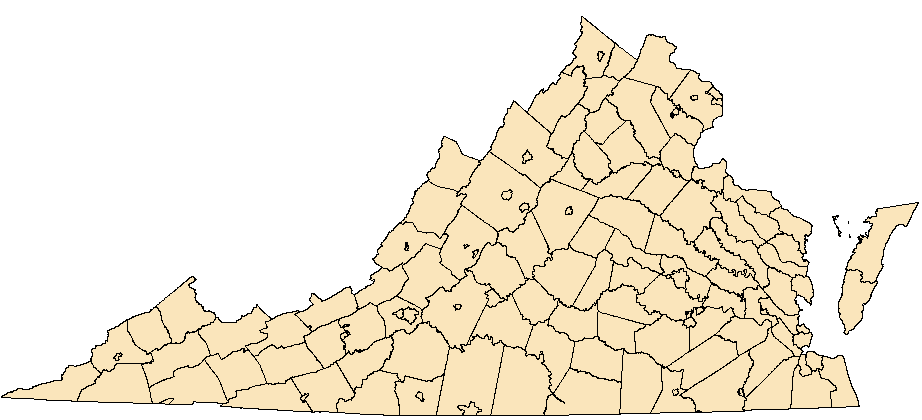Ophiogomphus susbehcha Vogt and Smith, 1993
St. Croix Snaketail
NatureServe Global Rank: G2
Virginia State Rank: S1S2
VA DGIF Tier: None
Federal Legal Status: None
Virginia Legal Status: None
Description: A relatively small clubtail with a bright green thorax and mostly black abdomen with narrow yellow markings above and along the sides. The yellow streaks on top of the abdomen are reduced on segments 8 and especially 9 (limited to a small dot), but the lateral markings become larger. The last abdominal segment is pale yellow. The eyes are blue and the unmarked face is green. The legs are black, with pale femora at their base. Size: 43 - 46 mm., 1.7 - 1.8 inches.
Similar species: Though similar to several other snaketail species, the long epiproct of the male is distinctive. The yellow terminal segment of the abdomen also separates this species from its near relatives.
North American Range: Known only from five rivers in the eastern United States: St. Croix (Wisconsin and Minnesota), Chippewa (Wisconsin), Flambeau (Wisconsin), Potomac (Maryland), and James (Virginia). A century-old record from the Susquehanna River in Pennsylvania may refer to this or a closely related species. In Virginia, known only from the Piedmont portion of the James River, with all records from the past decade.
VA Observations by Locality: Albemarle | Buckingham | Chesterfield | Cumberland | Fluvanna | Goochland | Nelson | Powhatan









Flight season and broods: March to 11 May in Virginia. This is one of the first dragonfly species to emerge each spring.
Aquatic Habitat: Restricted to large, relatively clean to pristine swift rivers with gravel and mud substrates.
Behavior and Ecology: Freshly emerged, or teneral, adults are easily found on lower branches, but as their wings stiffen and colors brighten, they are less frequently encountered, preferring the treetops.
Population trend and potential threats: A poorly known species that was first discovered in Wisconsin in 1989, Maryland in 2002, and Virginia in 2006. Adults are difficult to find after emergence, even in areas where larvae or exuviae are common. The species appears to be relatively common and widespread in the James River but it is apparently very local and rare in the Potomac River. To date, there are no records from the Virginia shoreline of the Potomac River. Listed as endangered in Wisconsin and as a species of special concern in Minnesota. Threats include chemical spills and other forms of pollution.
Management practices: Monitor populations and maintain good water quality.
References: Minnesota Department of Natural Resources. Ophiogomphus susbehcha Vogt and Smith, 1993. Saint Croix Snaketail. http://www.dnr.state.mn.us/rsg/profile.html?action=elementDetail&selectedElement=IIODO12180
Paulson, Dennis. 2011. Dragonflies and Damselflies of the East. Princeton University Press. Princeton and Oxford. 538 pp.
Roble, Steven M. 2013. Dragonflies of Virginia- Flight dates. Unpub.
Wisconsin Department of Natural Resources. Saint Croix Snaketail (Ophiogomphus susbehcha).
http://dnr.wi.gov/topic/EndangeredResources/Animals.asp?mode=detail&SpecCode=IIODO12180
Virginia Department of Conservation and Recreation, Natural Heritage Program, 600 E. Main St., 24th Floor, Richmond, VA 23219
This atlas was compiled
by the VA Natural Heritage Program with funds provided by the VA Dept. of Game and Inland Fisheries through a state wildlife grant
from U.S. Fish and Wildlife Service
Questions/Comments? Check the contacts page |
Internet Privacy Policy Statement
Last Modified: Friday, 26 February 2021, 03:21:56 PM